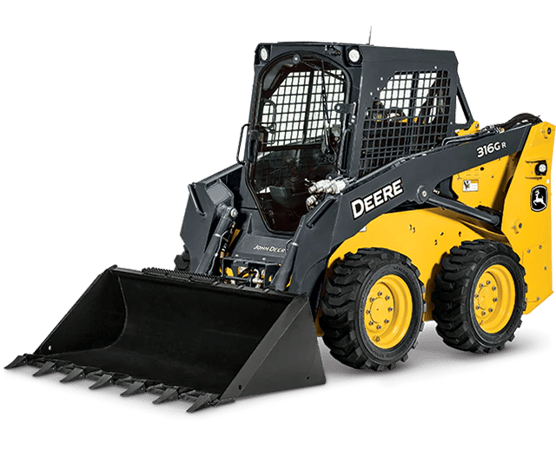Forklift Rental: Heavy Training Equipment for Warehousing and Extra
Forklift Rental: Heavy Training Equipment for Warehousing and Extra
Blog Article
Optimize Your Budget Plan by Understanding the Prices Connected With Building Equipment Services
Recognizing the complete range of costs linked with building and construction devices leasings is crucial for optimizing your budget. What methods can be used to efficiently handle these prices and ensure a more effective rental experience?
Review of Rental Expenses
When considering building and construction equipment services, comprehending the linked expenses is paramount for efficient budgeting and project preparation. Rental costs can differ significantly based upon several aspects, including devices kind, duration of service, and location. The preliminary rental fee typically reflects the devices's market need and its associated operational capacities, influencing the general expenditure.
Along with the base rental price, secondary expenses might arise, such as transport fees, gas additional charges, and maintenance fees. It is necessary to represent these extra expenditures to accurately examine the complete price of renting devices. In addition, the rental duration can impact prices; longer leasings might receive discounted rates, while short-term leasings could sustain higher daily fees.

Malfunction of Rental Rates
An extensive understanding of rental rates is important for professionals and project managers intending to maximize their spending plans. Rental prices for building equipment typically are composed of numerous elements, including base rates, time-based costs, and use charges.
Base rates are the core costs connected with the leasing of the equipment, often established by the kind and size of the equipment. These prices can vary significantly, affected by factors such as tools demand, availability, and local market patterns. Time-based charges, which might be daily, weekly, or monthly, serve to suit various project timelines and rental periods.
Furthermore, rental prices might include usage fees, which are applicable when tools is utilized past a specified limit, making sure that the rental company can make up wear and tear. Seasonal need fluctuations can additionally influence rental rates, with peak construction seasons usually regulating higher rates.
Additionally, understanding the rental business's plans relating to maintenance and insurance coverage can offer more insight into the total expense framework. By analyzing these elements, contractors can make educated choices, guaranteeing the option of rental equipment lines up with both task requirements and budget plan restraints.
Additional Fees to Think About
Comprehending the details of added costs is essential for professionals to manage their general leasing costs properly. Past the typical rental prices, numerous supplementary charges can significantly impact the total cost of equipment rental. These costs often consist of distribution and pick-up costs, which can differ based upon range and logistics associated with delivering the tools to and from the task site.
Furthermore, some rental companies may enforce gas surcharges if the equipment is returned with much less fuel than when leased. It is also necessary to be aware of potential cleansing charges, especially for pop over here specialized tools that calls for complete maintenance after use.

Extensively examining the rental agreement and clarifying these added charges upfront can aid specialists make certain and prevent unanticipated expenses that budgets stay intact throughout the job lifecycle.
Maintenance and Repair Service Expenses
Normal maintenance and repair service expenses are usually neglected variables that can considerably affect the overall price of construction devices services. When leasing tools, it is essential to take into consideration not only the rental charges yet also the internet prospective prices related to keeping the equipment in optimal operating condition.
Several rental companies include fundamental upkeep as part of the rental contract; nevertheless, extra comprehensive repair services or unanticipated breakdowns can result in extra expenditures. It's important to examine the rental agreement carefully to understand what maintenance services are covered and what obligations drop on the tenant.
Moreover, tools that is not properly maintained can lead to inefficiencies on duty site, potentially triggering delays and enhancing job expenses. To reduce these dangers, it is a good idea to carry out routine evaluations and preserve open communication with the rental service provider relating to any type of issues that emerge throughout use.
Insurance Coverage and Responsibility Expenses
Insurance coverage and liability prices are critical components that can considerably influence the total cost of building and construction tools leasings (heavy equipment rental). These prices ensure that both the rental business and the client are shielded from potential financial losses developing from mishaps, damage, or burglary throughout the rental period

Furthermore, clients ought to know any type of deductibles or exclusions in the insurance coverage, as these can impact possible out-of-pocket expenses. Recognizing the terms of any kind of insurance policy protection is important to prevent unforeseen costs. Ultimately, budgeting for insurance and responsibility costs can help make certain a smoother rental experience and secure against financial risks related to building and construction projects.
Conclusion
In conclusion, a detailed understanding of the costs connected with construction tools services is essential for effective budget plan administration. Ultimately, informed decision-making regarding devices services adds to the general success of building undertakings.
Rental expenses can vary considerably based on several elements, consisting of tools kind, period of service, and area (construction equipment rentals). The rental duration can impact pricing; longer leasings might qualify for reduced rates, while temporary services could sustain higher daily charges
By conducting detailed research study and engaging with credible rental companies, specialists can properly navigate the complexities of rental rates, inevitably maximizing their financial resources.
Past click to find out more the conventional rental prices, numerous supplemental fees can substantially influence the total price of equipment service. Rental companies often offer liability insurance coverage that covers injuries to 3rd celebrations or damage to building, while tools damages insurance can cover the cost of fixings or substitute if the rented equipment is harmed.
Report this page